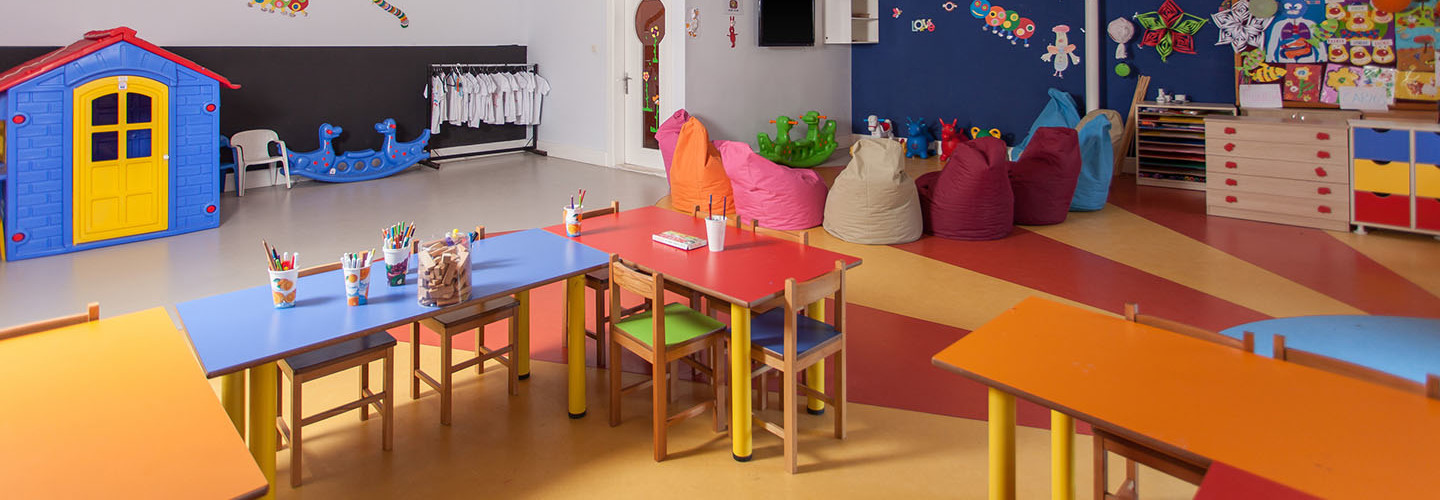How K–12 Schools Can Create Flexible Seating in the Classroom
Ideas about teaching are changing, and classrooms are starting to change along with them. New K–12 pedagogies that focus on collaborative work and learner-centered education require schools to redesign their classrooms with the aim of encouraging these new curricula.
The traditional classroom setup, with rows of desks and a board up front, has become, in many cases, too rigid to accommodate the next generation of K–12 learning. Many teachers have begun to find that creating a more free-flowing classroom environment allows students to use the space as they see fit in order to achieve a more customized learning experience.
“One cannot have a community of learners without having a positive instructional climate,” writes Alexa Darby, a psychology professor at Elon University. “Instructors help to create this climate by everything that they do, from the way they respond to student questions to the arrangement of the classroom chairs.”
A flexible seating arrangement is a key part of this new, modern learning environment. Here’s how teachers can get started.
MORE FROM EDTECH: Check out the basics of a modern learning environment.
What Is a Flexible Classroom?
A flexible classroom is a learning environment that utilizes an “agile physical setup that will accommodate both independent and group work,” according to a CDW white paper on constructing modern classrooms.
Typical solutions in a flexible classroom might include:
- Unconventional chairs: Adding contemporary seating — such as beanbag chairs, scoop chairs or exercise balls — makes it easy for students to move around the classroom. These chairs are also good for both individual and group work and give students more freedom and comfort than a traditional desk chair.
- Adjustable standing desks: Standing desks, such as Ergotron’s LearnFit, allow students to control their work environment to fit their needs at any given time.
- Cushions and mats: Sitting at a desk all day can be distracting for students who have trouble staying still. Floor seating can keep students focused on their work instead of trying not to fidget.
Flexible furniture is just one of three key components of a modern learning environment, alongside connected devices and audio-visual tools. Flexible seating in classrooms can be a great place for teachers to start, however, as it can be the catalyst for meaningful technology use in the classroom.
“While classroom furniture may seem like a decidedly low-tech solution, it can be a high-impact tool that literally puts students in the right learning posture,” the CDW white paper notes. “In a modern learning environment, flexible classroom spaces organically integrate technology, helping teachers to better engage students and facilitate the mix of independent, small-group and whole-class learning that is now viewed as essential to student success.”
What Are the Benefits of a Flexible Seating Classroom?
Currently, few studies have looked deeply into the benefits of flexible classroom design. However, teachers adopting flexible seating testify to its influence on K–12 students’ performance and engagement.
“When students are given a choice of where to sit, it increases their engagement and overall attentiveness and just creates a more positive environment,” Kara Adams, a teacher at Belden Elementary School, tells WKYC.com “It goes from 'my classroom,' to 'our classroom,' and then 'total community.'"
After Kelly Almer, an elementary school teacher for Littleton (Colo.) Public Schools, replaced the classic desks in her classroom with couches, beanbag chairs and movable desks, her students displayed a different attitude toward their studies.
“I will never go back,” Almer told Education World, “The room has become ours instead of mine, and this has given my students a sense of ownership and enabled them to become invested in their own education.”
MORE FROM EDTECH: Steps to create a modern learning environment.
What to Include in Your Flexible Seating Classroom
When designing a flexible classroom environment, start by looking at how modern businesses configure their office spaces to maximize efficiency.
“In the business world, adults move around throughout their workdays, going from ergonomic chairs in their offices to conference tables to quiet corners, depending on the task at hand,” the CDW white paper notes. “It’s important that kids be allowed to do the same.”
Offering students multiple places around the room to sit and work, whether at a standing desk or on a beanbag chair, can have a great effect on student participation and productivity.
“Everything is built toward an open environment and geared toward collaboration,” Scott Harris, Neosho School District’s technology director, told EdTech. “Our goal is to enhance learning, and it works. Students are more engaged, and schools have better retention.”
While rows of desks may seem inappropriate for a flexible learning environment, it is important to have areas where students can sit and work together. For example, modern desks with dry-erase tops are a great place for students to huddle together and collaborate on a project, David Andrade, K–12 education strategist at CDW-G, tells EdTech.
Regardless of what solutions schools adopt, it is important to remember flexible seating is not about how advanced the furniture is, but how students can use it.
“Flexible seating is about more than simply having a variety of different, fun seats in the classroom,” writes Brooke Markle, an English teacher at Mechanicsburg Middle School in Mechanicsburg, Pa. “It’s about utilizing student voice, creating buy-in, heightening collaborative learning, and prioritizing students’ needs concerning the environment in which they learn.”








